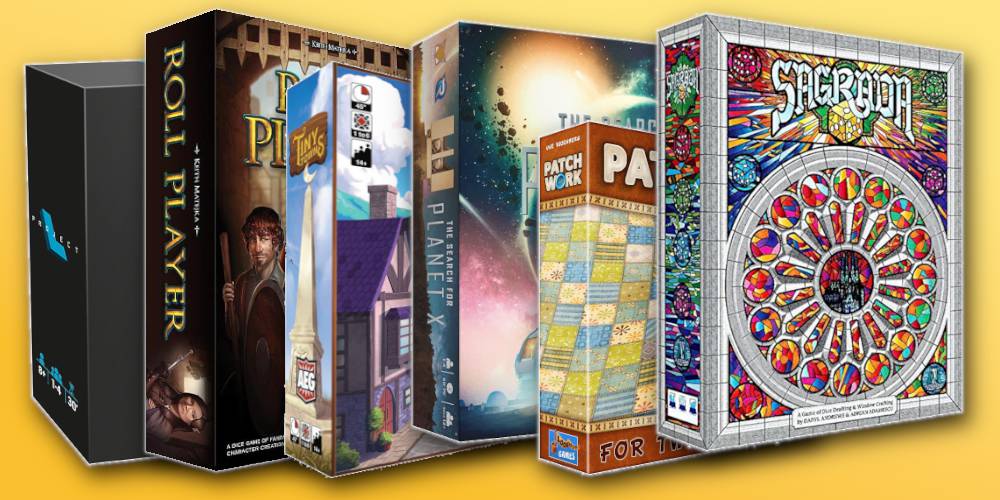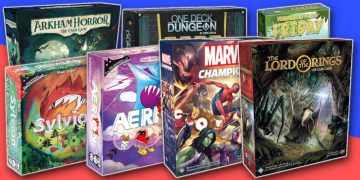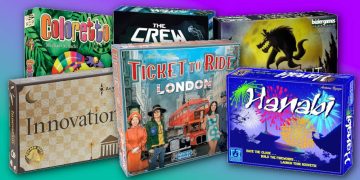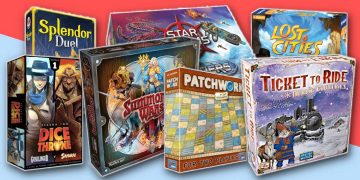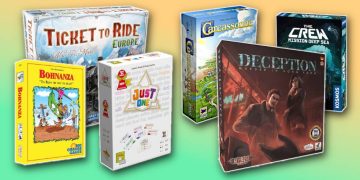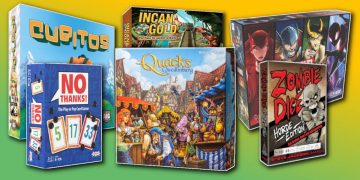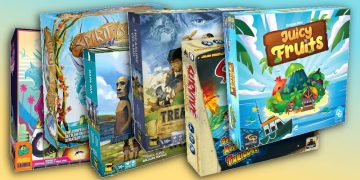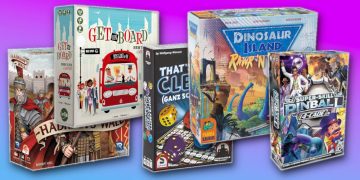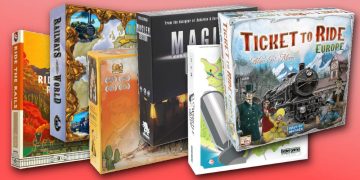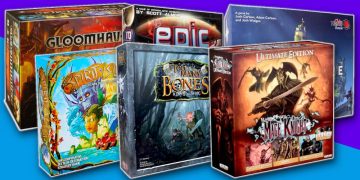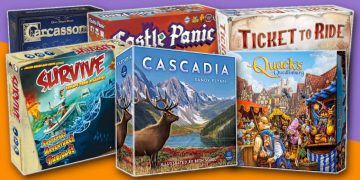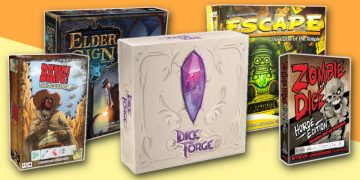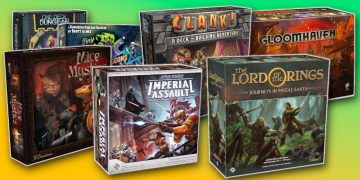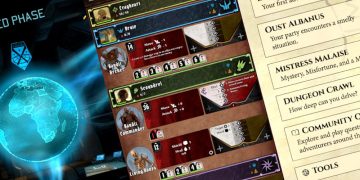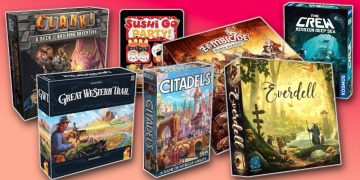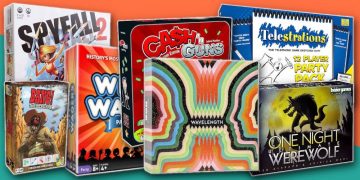Board games can be engaging for all kinds of reasons. For me, I love being challenged by a game that presents itself as a puzzle to be solved, whether it's a spatial puzzle, logical puzzle, or some other kind.
What exactly is a puzzle board game? It's hard to define because nearly every board game—except for dexterity-based games—is a kind of puzzle where you're solving for a solution (i.e. how to win the game) within the constraints of that game (i.e. the rules of play).
A board game is a puzzle game when solving for a solution is the core experience and not just one of many aspects. You aren't molding the game with clever play; rather, the game is putting you inside a box and you're figuring your way out of it.
Here are my picks for the best puzzle board games and why you need to try these if you're looking for a thinky but fun time.
15. ROVE
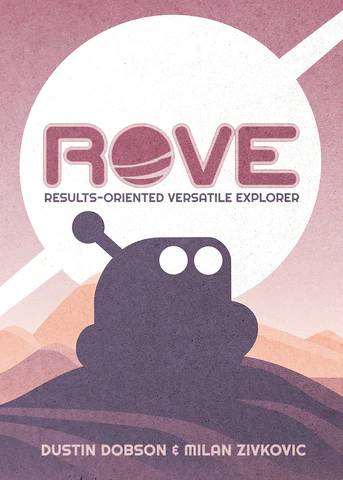
ROVE is a tiny card game by Button Shy Games, a company who specializes in 18-card "wallet games" that are highly portable. This one is a solo spatial puzzle game that's extremely thinky.
In ROVE, six of your cards are module cards that are positioned on an imaginary grid. Your goal is to move them around into a formation that matches the pattern of your current mission card.
You only have a limited number of moves—dictated by the cards you play from your hand—and each module has its own unique rules for movement (along with one special ability each).
You'll love ROVE if you like puzzle games where the challenge is to move things around and reach a solution in as few moves as possible.
14. Sprawlopolis
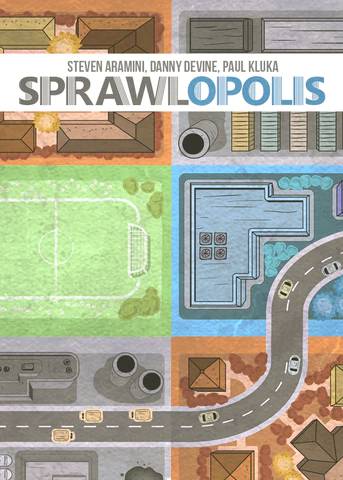
Designed by Steven Aramini, Danny Devine, and Paul Kluka
Supports 1 to 4 players
About 10 to 20 minutes
Sprawlopolis is another tiny 18-card game by Button Shy Games and this one is the company's best puzzle game yet. (There won't be any other wallet games by this company on this list.)
In Sprawlopolis, you're building out a city by placing cards that have different districts on them: Residential, Commercial, Industrial, and Park. The largest region of each type will earn you points.
But it's not easy because every card also has roads going through the districts, and each separate road will lose you points. You're trying to build regions, but you also need to connect your roads.
And there's one final twist: Every game starts with three random scoring cards that provide more ways to earn and lose points. These cards combine to form your target score to win!
If you're looking for a puzzle card game that's portable, affordable, and plays in under 20 minutes, it doesn't get better than Sprawlopolis.
13. Patchwork
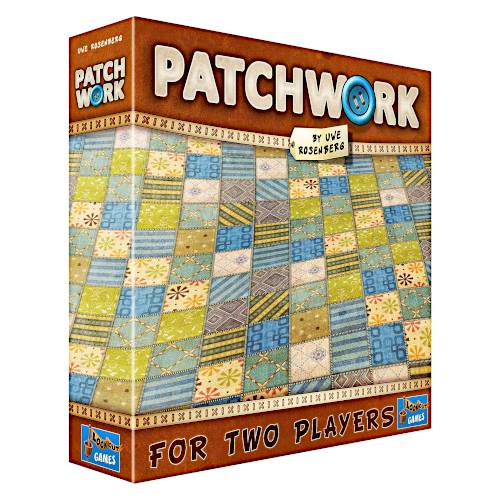
If your idea of an intriguing puzzle board game is along the lines of Tetris, then you should definitely check out Patchwork.
Patchwork is a two-player spatial puzzle game where you take turns drafting Tetris-style polyomino tiles and placing them onto your own player boards that each have a 9x9 grid.
But it's more than just a spatial puzzle game. You'll also be collecting buttons as currency, which are needed to buy the tiles for your board. Patchwork is as much about managing your button economy as it is making sure you can fill out your grid.
Patchwork is a simple and quick game that strikes a great balance between these two elements, which is why it's one of the most popular two-player board games (particularly for couples).
12. Bärenpark
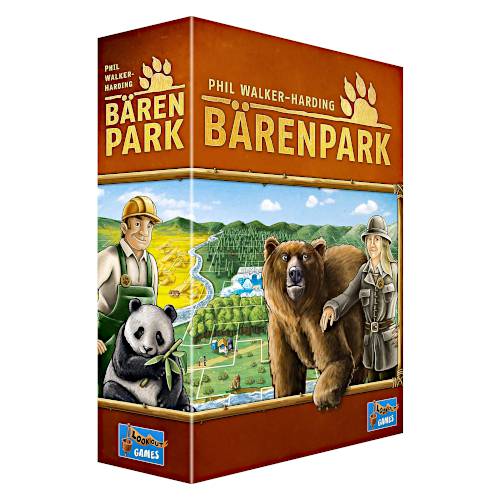
If you like the idea of Patchwork's spatial puzzle gameplay with polyomino tiles but want a game that lasts a little longer and supports a higher player count, then Bärenpark is the one you want.
In Bärenpark, you're building out your own bear park by placing polyomino tiles on your own personal player board.
Some of the park spaces on your board have special icons on them. As you place your tiles, covering these icons will trigger special actions like drafting even better tiles or expanding your park.
What's great about Bärenpark is that this is actually a race game: the first player to expand their park three times and fill out the entirety of their park is the winner.
In that sense, Bärenpark is both a spatial puzzle (i.e. maximizing tile placements) and an efficiency puzzle (i.e. triggering the right actions at the right time to minimize wasted turns).
11. Savannah Park
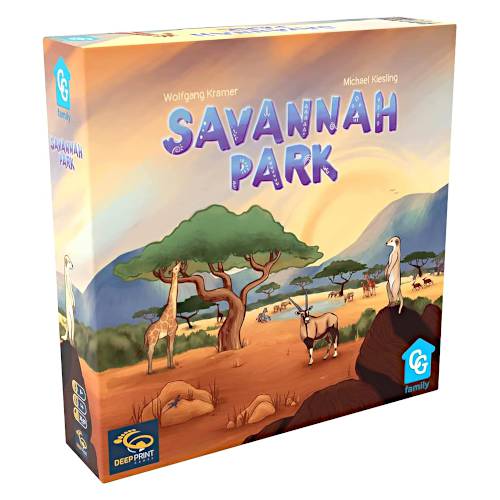
Designed by Michael Kiesling and Wolfgang Kramer
Supports 1 to 4 players
About 30 to 45 minutes
Savannah Park is a game where everyone has their own identical player board, plus a set of 33 unique animal tiles for each player. Those tiles are randomly dispersed to fill each player's board—and when that's done, each player's board will have 10 open spots.
Turn by turn, each player will pick one of the unique animal tiles. Then, every player must move that exact tile on their own board to one of the available open spots on their own board. When an animal is moved, the tile is flipped over to show it can't be picked anymore.
After 33 turns, all players will have moved all the animal tiles. Boards are scored according to several spatial constraints (e.g. points for the largest grouping of each animal type) and the highest scorer wins.
Savannah Park is a full-on spatial puzzle game where you need to think ahead to ensure your animals can go where they need to. But it's also a strategy game where you can mess up other players through your tile selection on your turn. That combination is surprisingly fun!
10. Evergreen
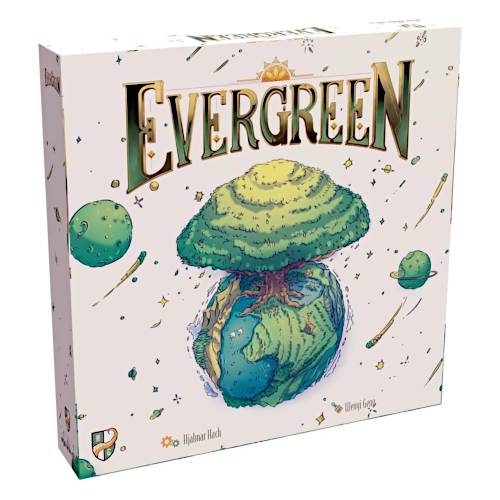
In Evergreen, players each have their own planet boards that start off barren but will grow trees over the course of the game. These planets are divided into different biome regions.
Every round, players will draft from a set of cards. These cards dictate two things: the biome in which they can act that round (e.g. seed saplings, grow saplings into trees, etc.) and a special ability that they can use that round.
The main puzzle element comes in the placement and growth of trees. Trees only score points when they're mature, but mature trees block sunlight from other trees behind them (so they can't score points).
On top of that, the direction of sunlight changes every season so trees that didn't block any trees in spring might block trees in summer, and the different biomes score differently over the course of the game.
The key to winning Evergreen rests in managing all of these different aspects in proper balance, making it one of the best midweight puzzle board games for hobby gamers.
9. Welcome to Your Perfect Home
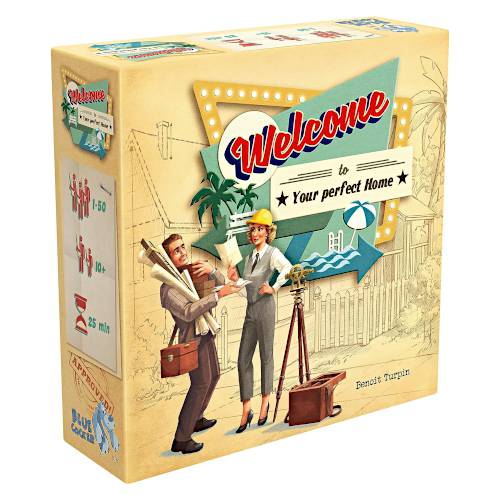
Welcome to Your Perfect Home (also called Welcome To...) is one of my favorite paper-and-pencil board games. Why? Because it's really just an elegant puzzle game that's thinky but not stressful.
Every round, you're presented with three options. Depending on which option you pick, you get to develop your neighborhood in different ways, and those paths each have their own scoring rules.
But no matter what you do, you're always beholden to the same constraint: the houses on each street must always be numbered in ascending order. As you fill out your houses, you always want to make sure you're leaving yourself room for numbers in between.
Welcome to Your Perfect Home is just a series of simple decisions and you never feel overwhelmed, but it's such a satisfying puzzle where your goal is optimizing your house placements for maximum points.
8. Switch & Signal
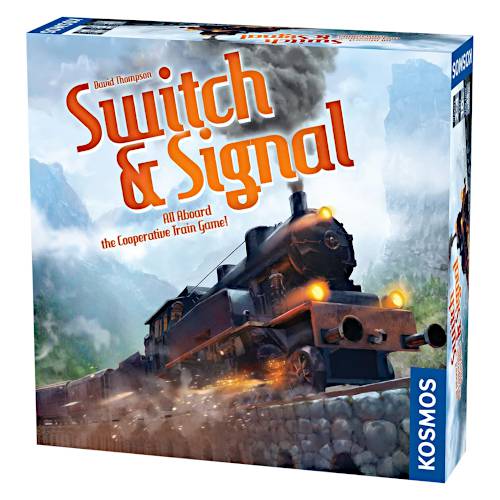
Switch & Signal is a cooperative puzzle board game with trains. But this isn't a game about building routes and connecting cities! Rather, this game is about guiding trains by toggling the switches that force trains to switch between tracks.
In Switch & Signal, the trains just keep coming—they appear on random tracks and they move at different speeds. You want to guide these trains to different destinations so they can pick up goods to be delivered to other destinations elsewhere.
You only have a limited number of actions per turn, so you need to toggle the right tracks at the right times to ensure each train gets to where it needs to be.
And while you can certainly play it solo, Switch & Signal is made even better by its cooperative gameplay. When you all find your groove and cleanly conduct these trains with teamwork, it's just so satisfying.
7. Tiny Towns
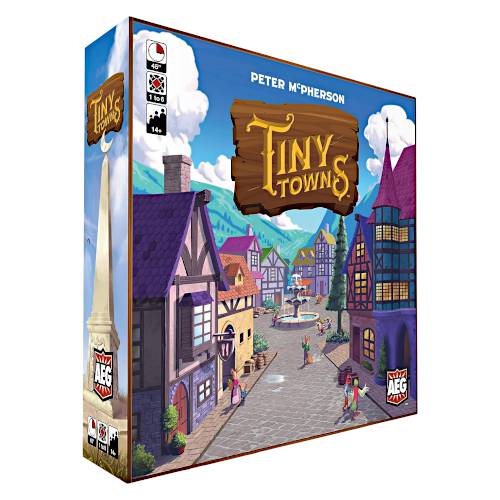
Tiny Towns is a fun spatial puzzle board game that has a bit of a bingo flair to it: on a player's turn, they pick one of the five resources—and every player gets to collect that resource.
Each player also has their own 4x4 player board. They can place the collected resource anywhere they want on their board. Why are these resources being placed on boards? Well...
Every game of Tiny Towns starts with a random set of seven buildings. Each building has its own pattern that involves resources grouped together in a specific shape.
When players make that exact pattern on their board using resources, the resources are wiped from their board and they get to place one of those buildings on any of the spots where those resources were.
Each building provides points for various things (e.g. one building might gain points for every adjacent building of a certain type).
All in all, the spatial puzzle of Tiny Towns is two-fold: first, where to place resources, and second, where to place buildings. And because every player is collecting the same exact resources as everyone else, there's absolutely no luck involved!
6. Cascadia
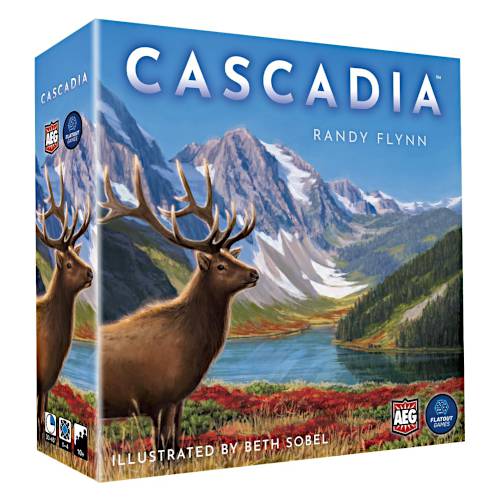
Cascadia is one of the best spatial puzzle board games because it's actually two spatial puzzles in one. That extra layer makes it so fun and engaging, but it never tips into "stressful brain burner" territory.
The first layer of the puzzle involves hex-shaped terrain tiles that fit together to create regions of each terrain type. Only the largest region of each terrain type gets scored, so smart placement is important.
The second layer of the puzzle involves animal tokens that are placed on top of the terrain tiles. Each tile can only support certain animal types, and animal tokens need to be placed in specific patterns to score. (Each animal has its own unique scoring pattern.)
Every round, you draft one of four random tile-and-token pairs, then add that tile and token to your personal board. Figuring out how to maximize your terrain regions and animal patterns is key to winning Cascadia, and that makes this one of the most engaging puzzle board games.
5. Sagrada
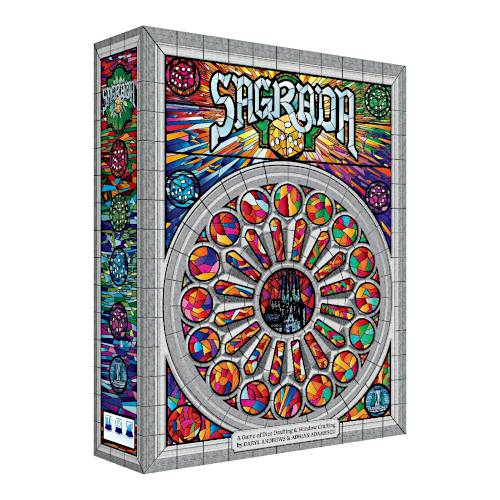
Designed by Adrian Adamescu and Daryl Andrews
Supports 1 to 4 players
About 30 to 60 minutes
Sagrada presents itself as a beautiful game about constructing a stained-glass window using colorful, translucent dice. In reality, it's a brain-crunching puzzle game for smarties.
Each player has a unique player board that consists of a 5x4 grid where dice will be placed, but some of the grid cells have restrictions on what kinds of dice can be placed on them.
How do you get dice? Every round, a handful of dice are randomly grabbed from a bag and rolled. Players then take turns drafting one die at a time to add to their player boards.
When placing a die, it must always be placed adjacent to an existing die on the grid. However, no two adjacent dice can ever be the same color or the same number value.
With all these rules involved, you can see how Sagrada is a full-blown puzzle. The stained-glass theme is icing on top.
4. Roll Player
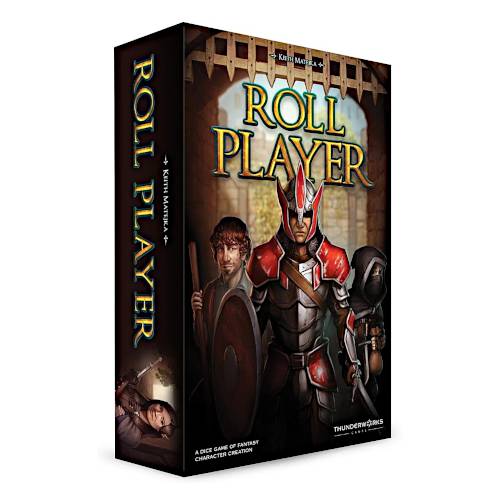
If you've ever played Dungeons & Dragons, then you know what it means to "roll a new character." In D&D, every character has six different attributes (e.g. Strength, Dexterity, etc.) and their values are determined using dice rolls. Hence, rolling a new character.
Roll Player turns this whole process into a fun puzzle game—and while you can certainly enjoy Roll Player even if you've never played any tabletop RPGs, the enjoyment is double if you have!
You start by drafting your character's Race, Class, and Alignment, which determine your ideal targets for each of your attributes. Then, turn by turn, you draft dice and add them to your different attributes.
The catch? Each attribute only has enough room for three dice, so you need to be selective in where you place each die. Furthermore, each attribute triggers a special ability when you place a die there (e.g. adding a die to Dexterity lets you swap any two dice).
And if that weren't enough, Roll Player also has Skills and Equipment that alter your character in various ways.
As you build your character's attributes, you'll earn points as your character starts meeting their ideal stats. Whoever has the most points at the end wins. Roll Player is several different puzzles that combine to form one big and thinky puzzle—and it's one of the best.
3. The Search for Planet X
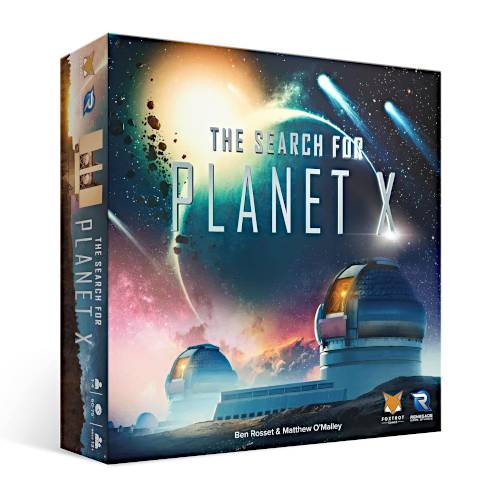
Designed by Matthew O'Malley and Ben Rosset
Supports 1 to 4 players
About 60 to 90 minutes
The Search for Planet X is the ultimate logical deduction puzzle board game. If you like games like Clue but you want meatier gameplay, or you want less of a luck factor, or you prefer a space theme over the murder mystery theme, then this one's a must-play for you!
In this game, you'll be navigating deep space in search of the elusive Planet X. In order to locate it, you'll need to travel around the sun and scan various sectors to figure out what they contain.
As you gain more information about each sector, you'll also gain information about where Planet X is—and eventually, by ruling out certain sectors and using logical deduction, you'll be able to pinpoint where it is. (Hopefully before anyone else does!)
Perhaps the best thing about The Search for Planet X is that the game logic is managed by a mobile app. Everything is randomized at the start of each game and you'll use the app to scan sectors and learn about what lurks in every sector you scan.
2. Factory Funner
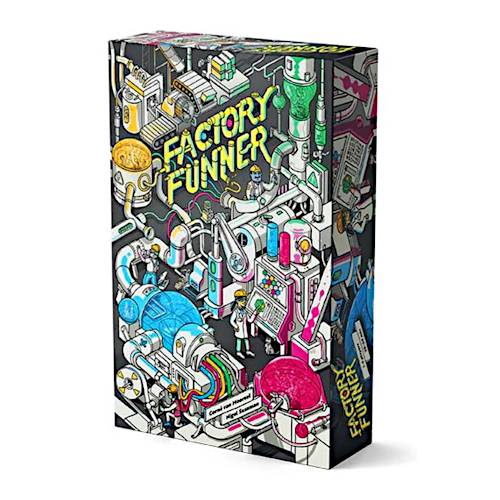
Factory Funner may remind you of a particular style of pipe-connecting puzzle games that used to be popular as web games and mobile games, except Factory Funner adds more depth to the concept.
In this game, players have their own factory boards where they'll be placing hex-shaped "machine" tiles that earn money. However, each machine tile requires different kinds of energy inputs in order to run, so your job is to hook them up to the necessary energy reservoirs.
Of course, each length of pipe that you lay down costs you money. Plus, you only have one reservoir of each energy type, so if you aren't careful, you'll end up running lots of pipe and cutting into your profits. (And whoever has the most money at the end wins.)
Factory Funner is both a spatial puzzle and an efficiency puzzle where your placements directly affect how much income you make. It's not just a great puzzle board game—it's also extremely fun!
1. Project L
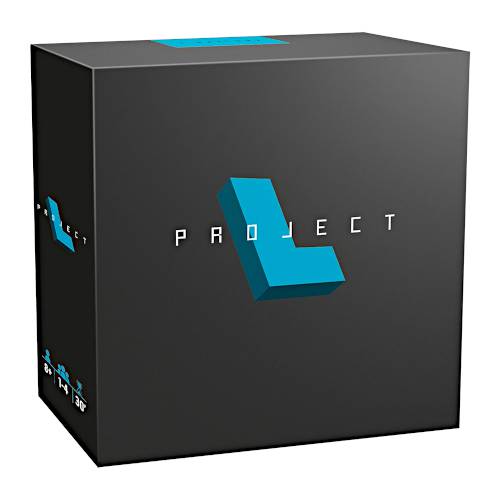
Designed by Michal Mikeš, Jan Soukal, Adam Spanel
Supports 1 to 4 players
About 30 to 45 minutes
Project L is the quintessential puzzle board game. It takes the idea of a spatial polyomino puzzle, combines it with a bit of engine-building, and tops it all off with a race element for added time pressure.
In Project L, you're trying to complete individual polyomino puzzles by filling them in with polyomino pieces. When you complete a puzzle, you get all the pieces back, plus any extra pieces awarded by the puzzle.
But what if you don't have enough pieces to complete a puzzle? Well, you can use an action to acquire a Level 1 piece. Or you can use an action to upgrade one of your pieces to a piece of the next level. Otherwise, you can use actions to place pieces or take more puzzles.
The thing is, you only have three actions per turn. Because of that, Project L demands utmost efficiency—you need to make full use of every action to complete more puzzles than everyone else.
Some puzzles are harder than others, and those puzzles are worth more points. When the stack of puzzles runs out, the game ends and whoever has the most points wins.
All of these elements come together and result in a high-tension puzzle board game experience that rewards clever moves and feels incredibly satisfying to play. Without a doubt, Project L is up there as one of the best puzzle board games of all time.
